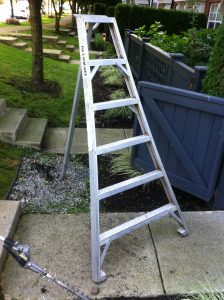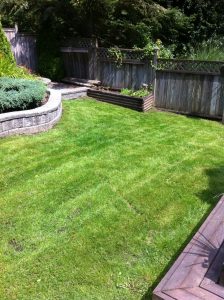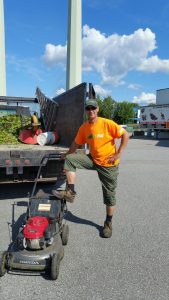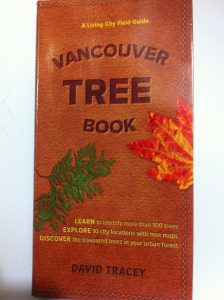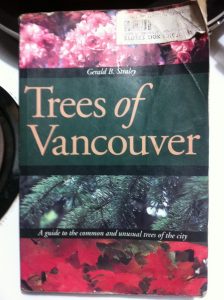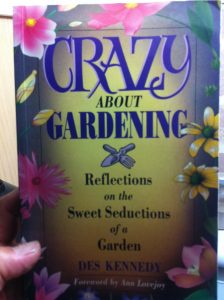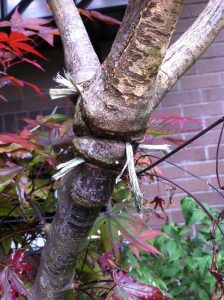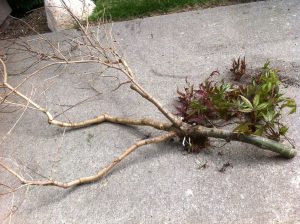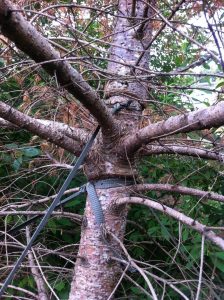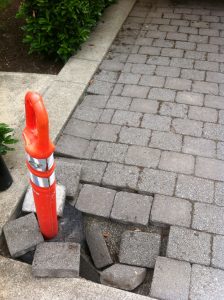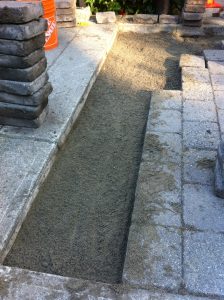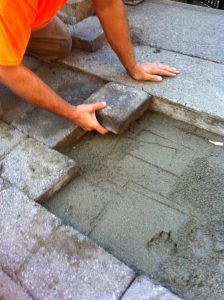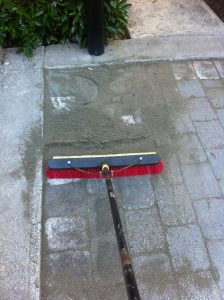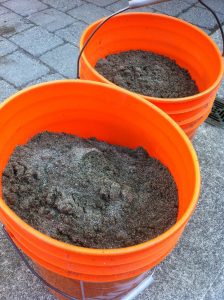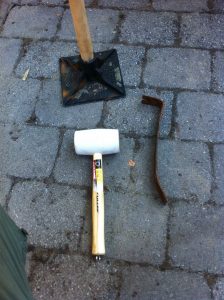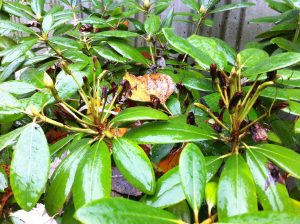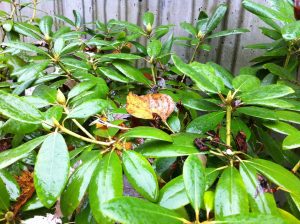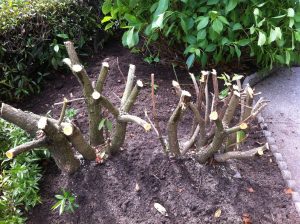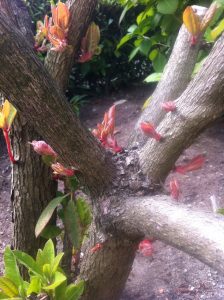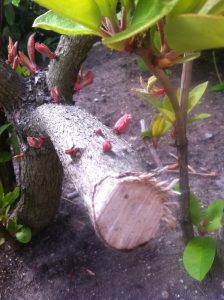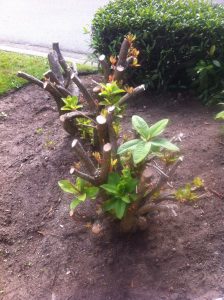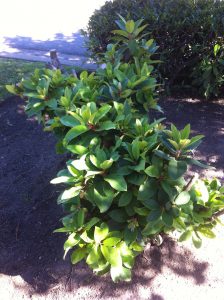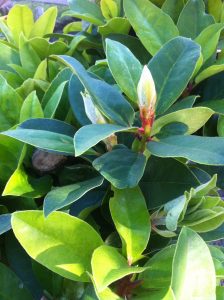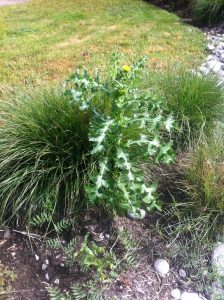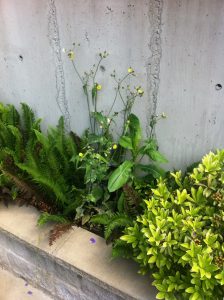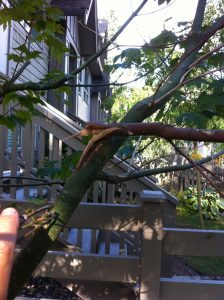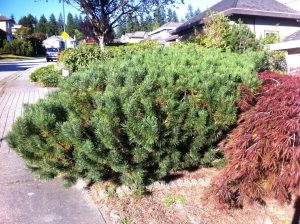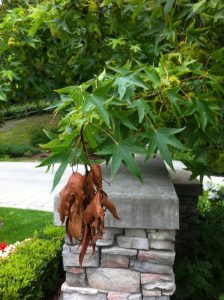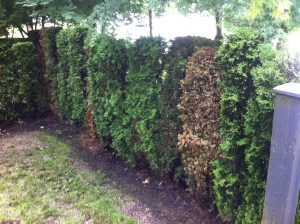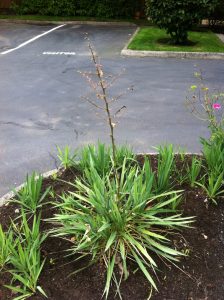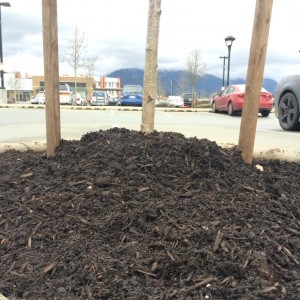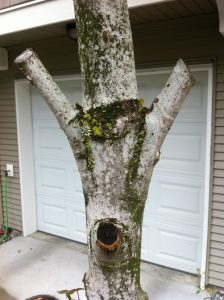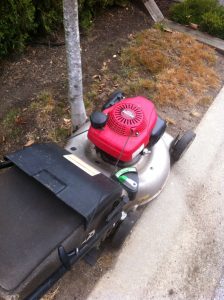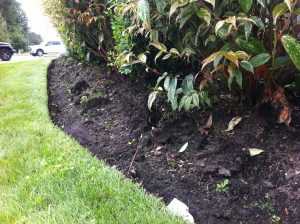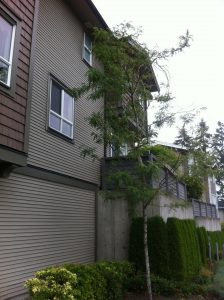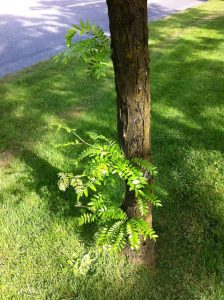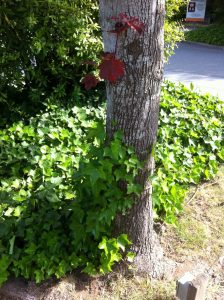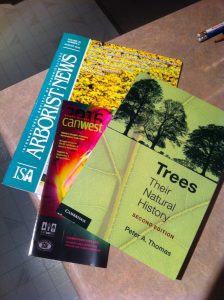Tripod ladders rule
Japanese-style tripod ladders are excellent landscape and garden tools! Out in the field helping one of our strata maintenance crews with pruning, I took my lunch and opened up the Vancouver Sun. There, on page B3 was an article on ladders by Steve Whysall. Happy coincidence!
Let’s get to the best part right away. The single peg on the ladder is brilliant because you can position it almost anywhere. It will fit through hedges and you can punch it into your soil for stability. The most common size is ten feet. Since I was pruning small hedges in tight entrances, the small six foot ladder was perfect. It’s light to carry and maneuver and it got me just high enough to perform my cedar shearing. Lifting the extendable shears above my shoulders is tiring and leads to needless exhaust sucking. Why do that? Always position yourself for maximum output and comfort.
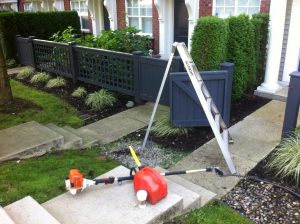
6 ft ladder is easy to maneuver in tight entrances and gets you just high enough to shear the cedars nicely
Safety
Obviously, the bigger the ladder and the higher you are, the bigger the dangers. Always think about safety. Don’t rush. My only serious injury in seventeen seasons of landscaping happened while I was descending one of the bigger ladders. It was a 12 or 14 foot “widow-maker”. I started descending before my power shears were completely stopped. Yeah, I know, this was early in my career. Then my thumb met the steel blades. If it hadn’t been for my nail, the top of my thumb would have been missing. I still recall my helper down below, horrified by my blood dripping on her.
Incidentally, this was also the first- and I hope only- time when I jumped the line at a walk-in medical clinic. I remember an older gentleman probably waiting for his cough syrup, objecting to my line jump. I couldn’t care less.
The Allright Ladder Company is based in Vancouver and it is the oldest ladder company in Canada. They’ve been making them since 1921. Visit their website for safety information or read the Vancouver Sun article sidebar.
As the fall and winter pruning seasons come, I will use these Japanese-style tripod pruning ladders often. Consider getting one for your garden. Most landscape companies have them on their trucks.


